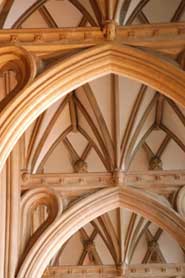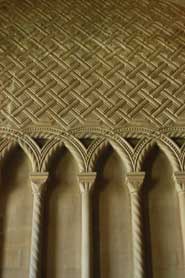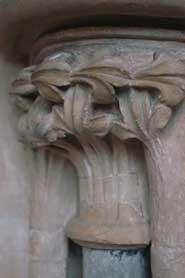Internationally-renowned experts will attempt to unlock the secrets of St Augustine’s, examining the architecture, decorations, fittings and the wider context of the building’s medieval and sixteenth century history.
Pamela King, Professor of Medieval Studies at the University of Bristol said: “Bristol Cathedral is not well-known enough: it was one of the most fascinating medieval works of architecture in the country. At this conference, we hope to unveil new theories on several of the most important aspects of this enigmatic building, including its spectacular chapter house and 'hall church' east end – a brilliant, controversial and highly experimental building of its day.”
Originally the most important monastery in Bristol, it was turned into a cathedral in 1542 by Henry VIII – apparently as an afterthought – as part of the Reformation. A few years before this the canons had been pensioned off and the monastery dissolved.
The east end of the church is one of the most important medieval buildings in Europe and many questions remain about its date (begun in 1298 but perhaps not complete until the 1350s), influence and unique architectural features. Recent research argues that it is modelled on the great hall of a castle – a strange thing for a church to imitate. For some experts it is one of the most influential buildings in Europe, ideas from it detectable as far afield as Prague and northern Germany; for others it is just a local eccentricity. Christopher Wilson, one of the greatest architectural historians of modern times, will address this question at the conference.
The spectacular Chapter House is one of the finest Norman buildings in the country and the main remnant of what might have been a spectacular Norman church, founded in 1140 (the Chapter House itself a couple of decades later). John McNeill, an expert on medieval architecture, will attempt to reconstruct this lost building.
Even more mysterious is the question of what, if anything, was there before the Normans. Important new research by archaeologist Roger Leech will throw new light on whether or not there was an Anglo-Saxon church on this site and what connection it had to Bristol's mysterious saint, St Jordan. His work may also help explain the origins of the famous Harrowing of Hell sculpture now in the cathedral's south transept, one of the most important surviving pieces of Anglo-Saxon carving in the country.
The conference will also feature research on a remarkable set of seventeenth-century paintings on plaster, almost unknown previously.
Celebrated local historian Dr Joseph Bettey will speak on 'The conversion of St Augustine’s, Bristol to a cathedral and its sixteenth-century history' at 6pm on Friday 19 September. The event is open to the public, free of charge. Evensong preceding it (at 5.15 pm) will be celebrated using plainchant, giving the cathedral something of the atmosphere it would have had in the Middle Ages - that is, the kind of music for which it was built, and which is now rarely heard.


